When I left the Archaeological Museum within the area of the Citadel in Amman, I had to face the fact that it rained outside. Not too much, but enough to be in my way. I tried to take photos of different monuments of culture by having mu back to the direction from which it rained (it was very windy). It worked at first.
So, from a slight elevation in front of the Archaeological Museum I could see nicely the Roman Temple of Hercules, as well as the remains of a colossal statue from the Roman period. Today, there are parts of the hand and the elbow here, and on the basis of that it is estimated that the statue made of marble was around 13 m tall, which meant that it was one of the biggest statues from the Greco-Roman period.
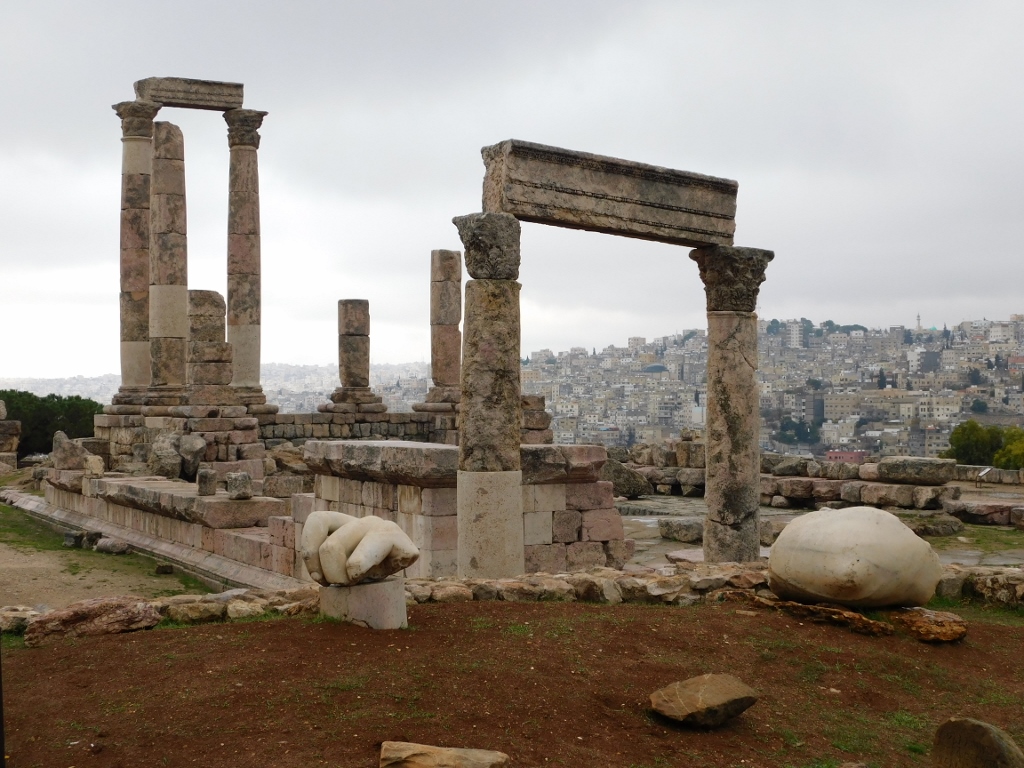 Remains of the colossal statue and the view at the Temple of Hercules
Remains of the colossal statue and the view at the Temple of Hercules
As for the temple, it was dedicated to one of the main Roman deities, but over time it was ascribed to Hercules on account of the size of the statue the parts of which have been found in the temple area. By the way, since this was a Roman temple the name of the hero is Hercules, while the original, Greek version was Heracles. So, Heracles was the son of the supreme Greek god Zeus and mortal woman Alcemene, and therefore it was not completely wrong to dedicate an important temple to a son of the supreme god.
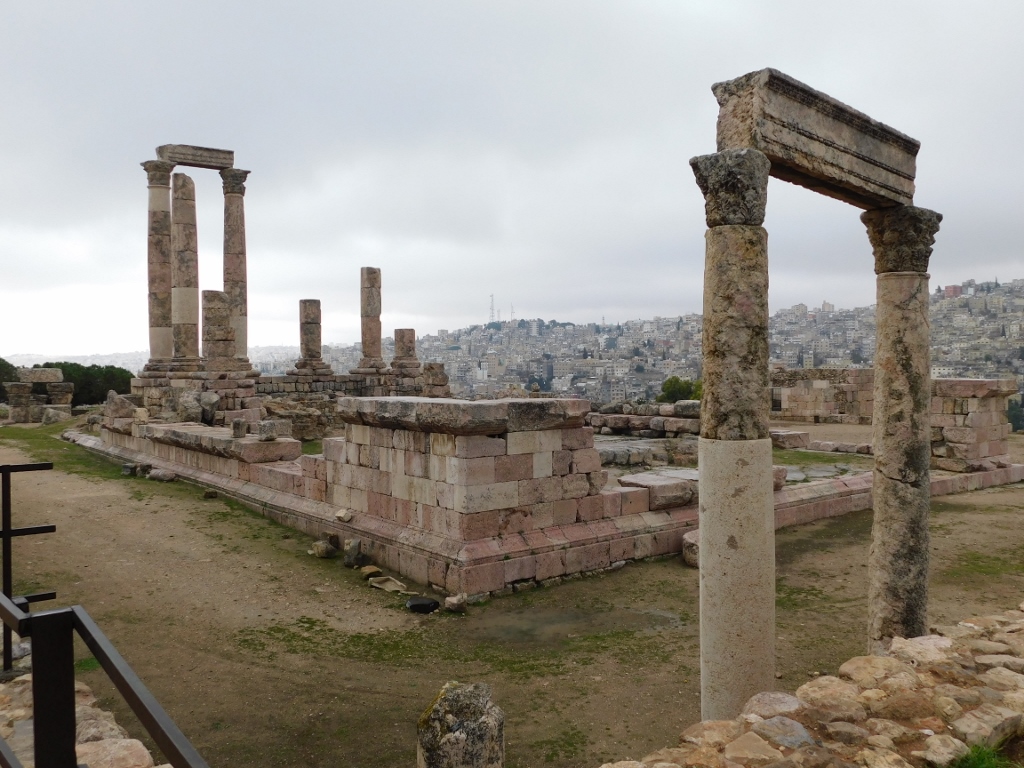 Temple of Hercules
Temple of Hercules
The Temple of Hercules was built in the period from 161 to 166 CE and its construction was dedicated to the then Roman co-emperors – Marcus Aurelius and Lucius Verus. However, what I found particularly interesting with regards to the period of the Roman rule in this city is that at the time Amman was called – Philadelphia! By the way, in ancient Greek Philadelphia means “brotherly love.”
I only walked around the Temple of Hercules and did not climb it. I’m sure that I would not see anything particularly interesting (I’m talking about myself and my level of knowledge of history and archaeology), bearing in mind that I believe that not everybody should climb the remains of ancient buildings since such actions can only contribute more to the decay of these old structures.
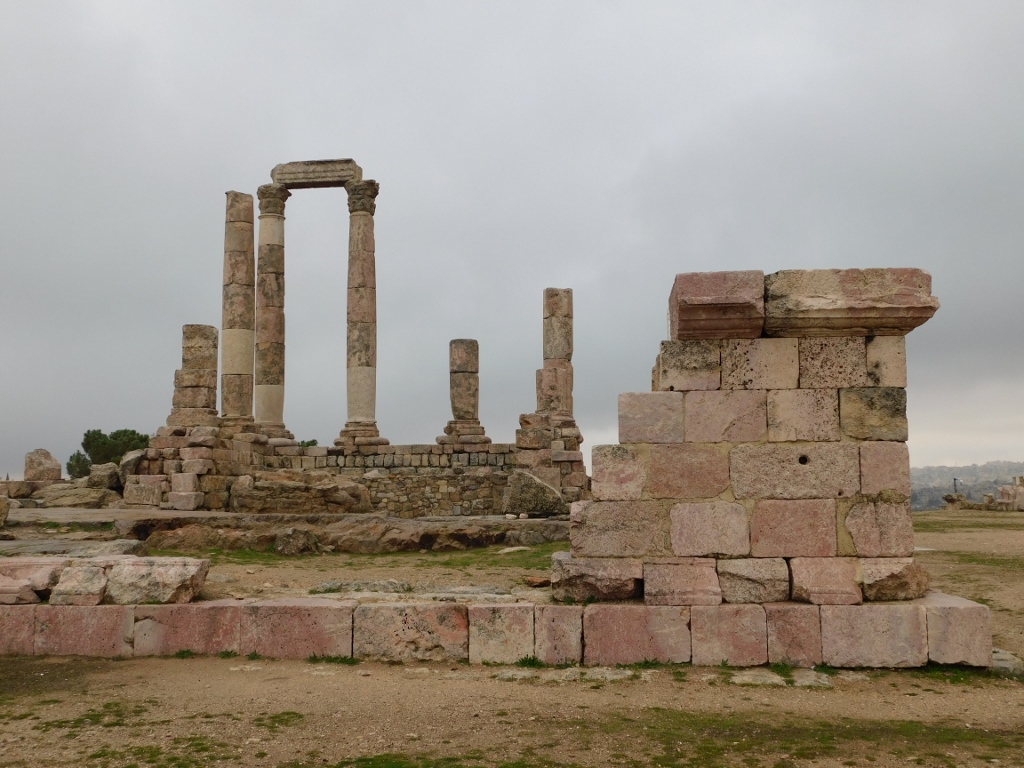 Temple of Hercules
Temple of Hercules
Instead of that, I moved on to the sightseeing of the Ayyubid Watch Tower built around 1220. Let me first explain who the Ayyubids, i.e., the Ayyubid dynasty were. This was a dynasty that founded the medieval Sultanate of Egypt, while the dynasty itself was established by the famous military commander Saladin in 1171.
The watch tower was positioned on the south side of the Citadel and it provided an excellent overview of the events in the old part of the city, as well as on the surrounding hills, as may be corroborated today.
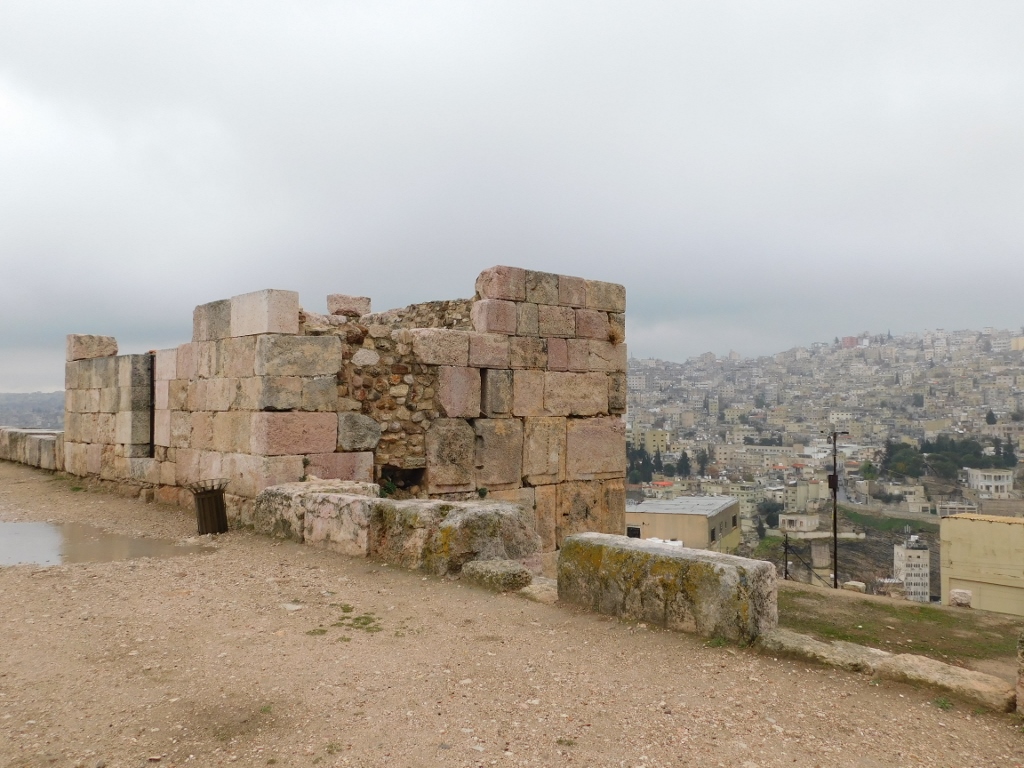 Ayyubid Watch Tower
Ayyubid Watch Tower
The watch tower has one room which has slits made on three sides, towards the city and the surroundings, while the roof used to be reached by exterior staircase.
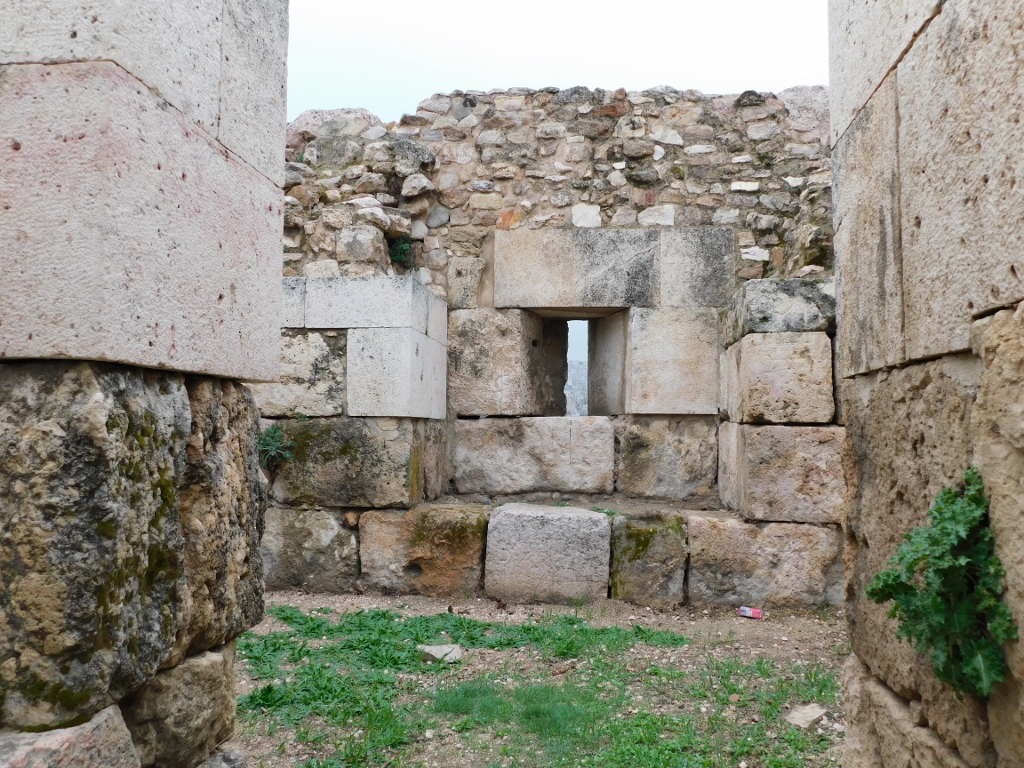 Ayyubid Watch Tower
Ayyubid Watch Tower
In terms of its architecture, the watch tower has some interesting elements facing the city and in order to see that I had to go down carefully along a side path lest I should slide. What I wanted to see were round stones taken from the nearby Temple of Hercules. This was a rather common practice – to use the material from the already existing building when constructing new ones. This was certainly easier than bringing in new material.
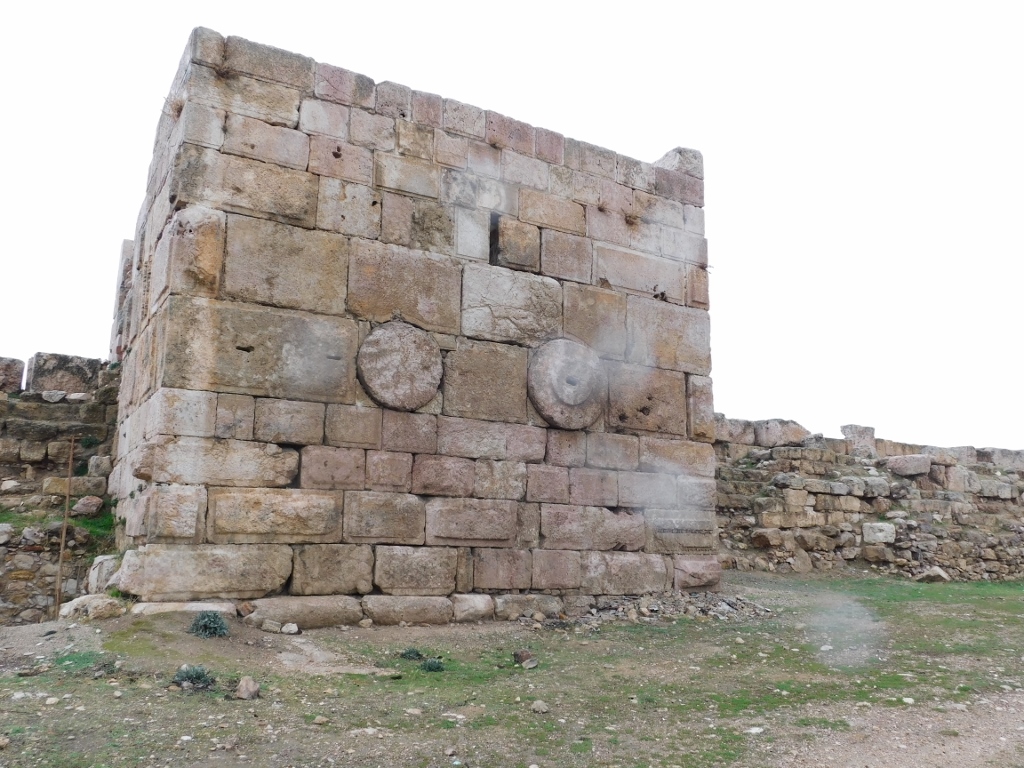 Ayyubid Watch Tower
Ayyubid Watch Tower
In the photo above it may be seen that the lens of my camera was covered in rain drops, although I tried to wipe it regularly. But, there was this strong wind and as soon as I would position the camera to take a shot, there would be immediately a few rain drops on the lens. This was also the case when I passed once again by the Temple of Heracles and took photos of some segments that pertain to it.
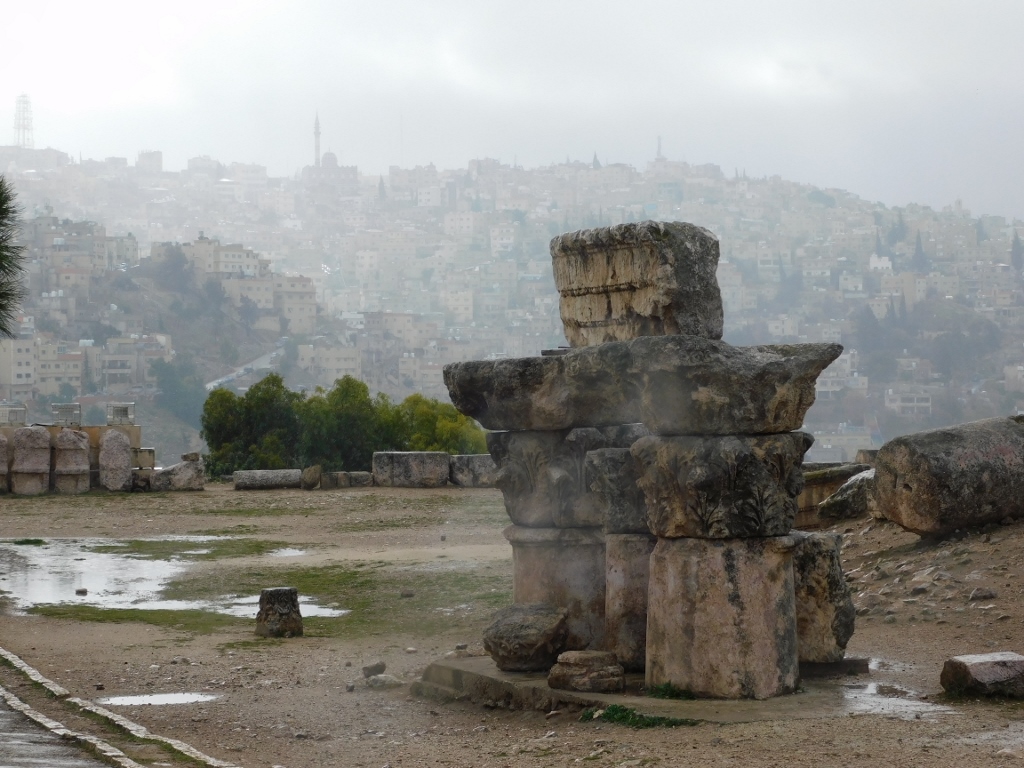 Scattered parts of the Temple of Hercules beside a visitor path
Scattered parts of the Temple of Hercules beside a visitor path
Still, before leaving the Citadel, I decided to go back to the north part of the site in order to see an open water cistern from the Umayyad period, called “Birka.” This impressive structure has a 17.5 m diameter and its stone walls are 2.5 m thick. The interior surface used to be coated by a waterproof layer of plaster the remains of which could be seen beside the stairs. The floor of the cistern that is not flat, but rather it inclines towards the centre, was made like that on purpose in order for all the unwanted silt to be collected there, in the middle.
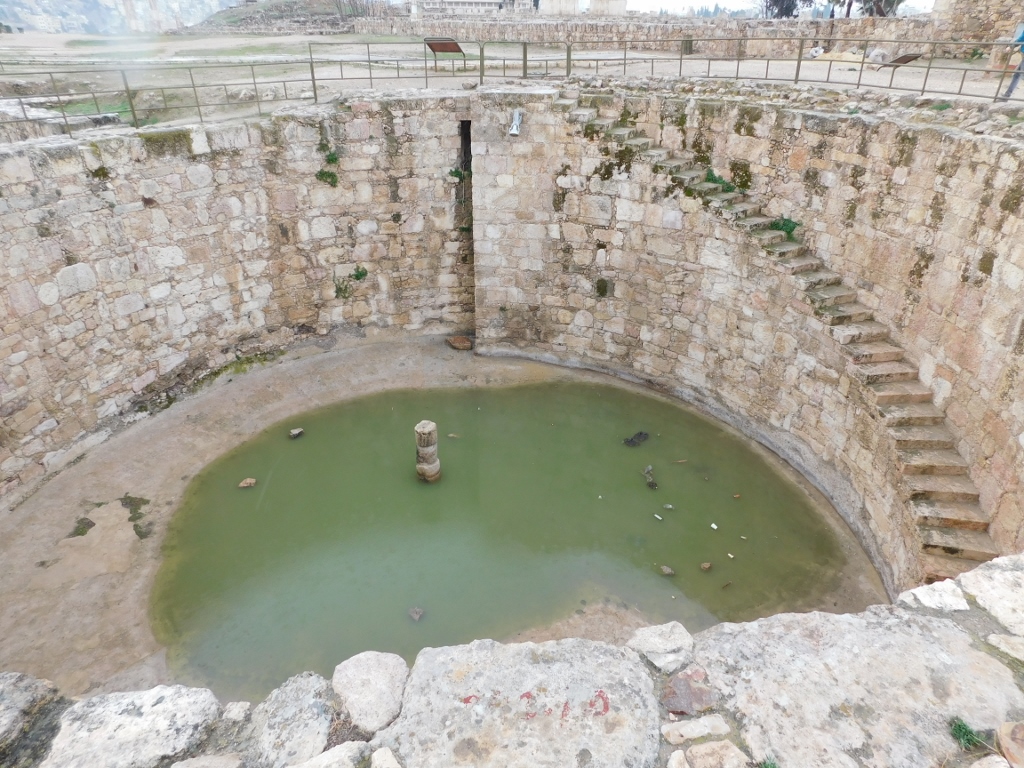 Open cistern “Birka”
Open cistern “Birka”
The volume of the cistern is up to 1370 cubic metres and the water was channelled into the cistern from the roofs of the surrounding buildings and from the paved surfaces. In the photos you can see remains of a stone column that was used in order to measure the quantity of water in the cistern. It is also interesting that the photo below shows an opening in the wall used for the draining of surplus water via a shaft on the east side of the fortification wall.
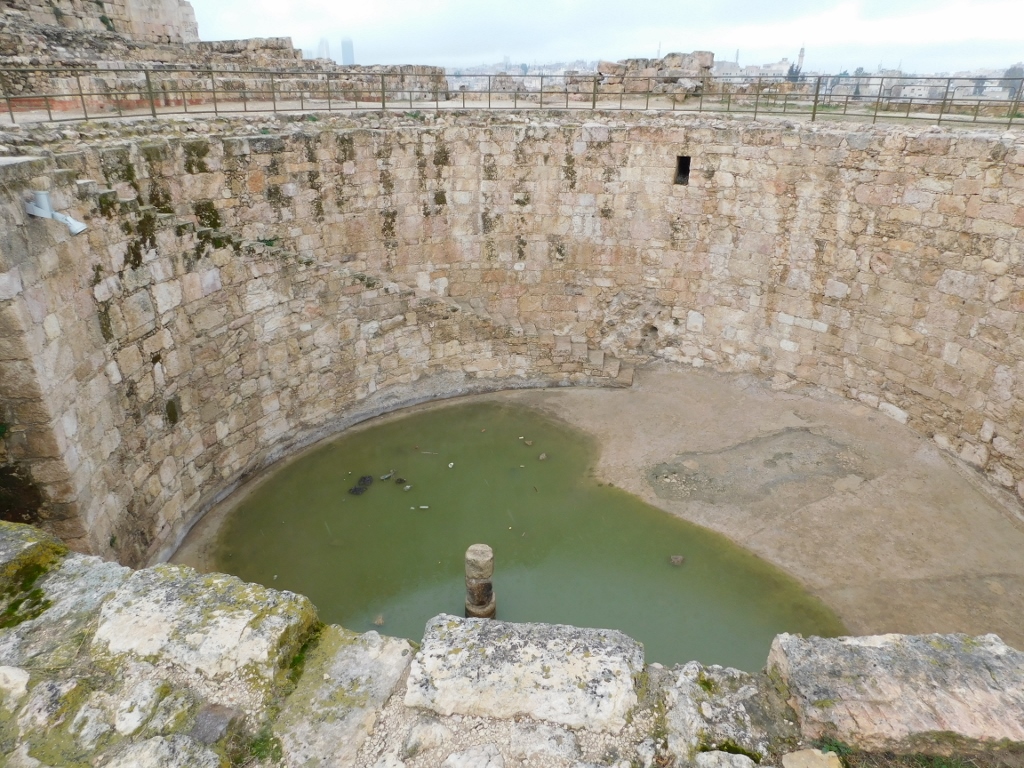 Open cistern “Birka,” the opening may be seen on the opposite side, below the contemporary protective fence
Open cistern “Birka,” the opening may be seen on the opposite side, below the contemporary protective fence
Here I also finished with my tour around the Citadel in Amman, so I headed back slowly towards the exit. Still, I took advantage of my “high position” in order to take photos of some parts of Amman.
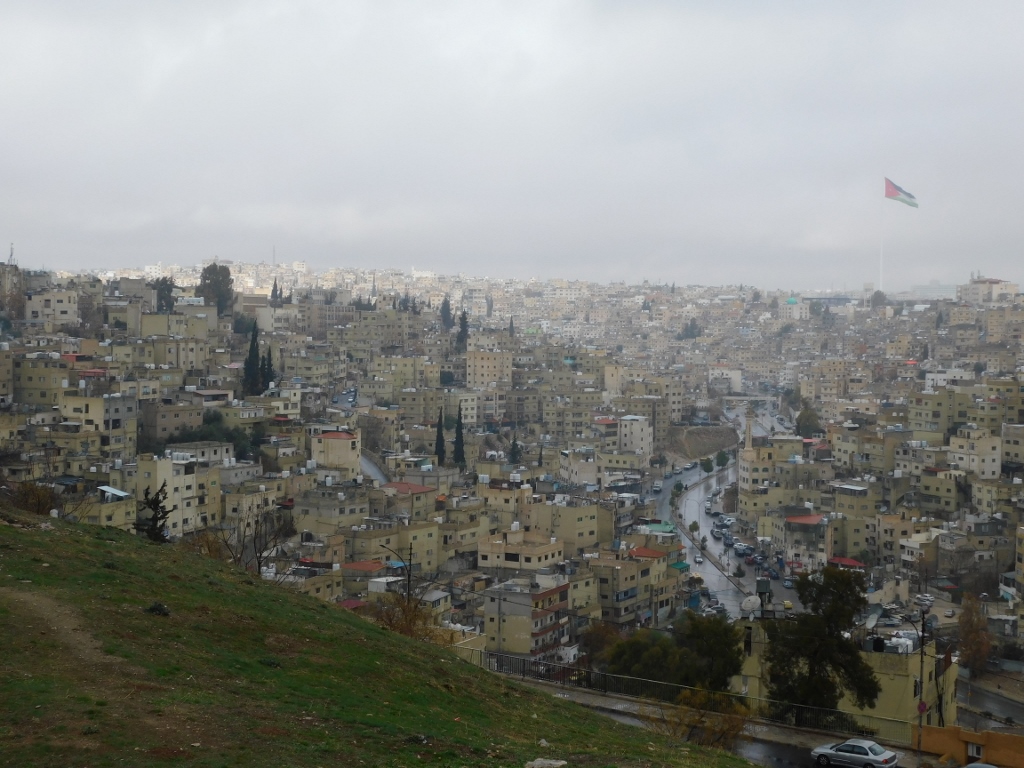 View at Amman from up high
View at Amman from up high
Particularly interesting was the view at the Roman Theatre that I also planned to visit on this day. After all, it was only some 5 minutes on foot from my hotel in Amman’s Old Town or downtown area.
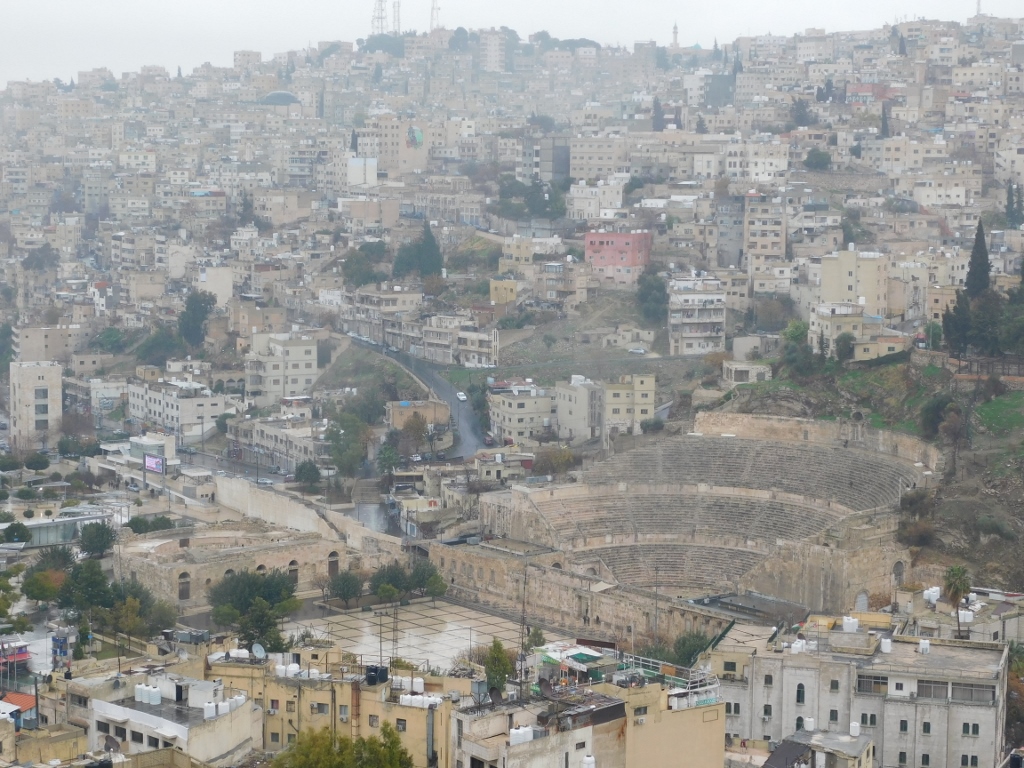 View at the Roman Theatre in Amman
View at the Roman Theatre in Amman
Although after the rain the clouds started to disperse a little (it was very windy and the wind was trying to chase them away), it did remain mostly cloudy throughout the day, although it did not rain any more, at least not when I was out.
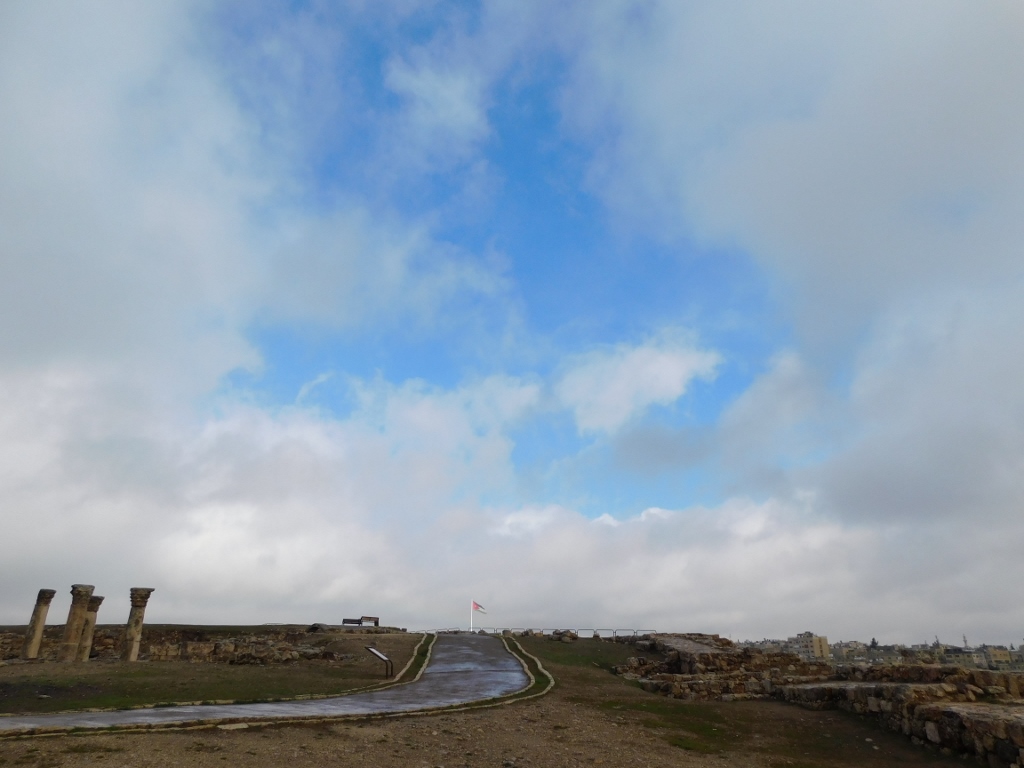 Sky above the Citadel in Amman
Sky above the Citadel in Amman
After my visit to the Citadel, I wanted to go for a nice coffee and a short break. As for the coffee, the traditional version made in Jordan is Turkish coffee and it is called like that. The difference in comparison to the one made in Serbia, for instance, is that the Jordanians add cardamom pods or ground cardamom into the coffee, thus giving it a very specific aroma. Every morning, with my breakfast, I asked for a large cup of Turkish coffee, which I actually don’t drink at home, because this was certainly better than some watery coffee from a machine. And yet, this time around I felt like having an espresso in one of the numerous cafés that operate on yet another hill in Amman. This one is called Jabal Amman, which should mean “Amman hill.” I was already there on the first day looking for the Jordan guidebook, but on that occasion I did not have the time to sit for a coffee. However, I was in no mood whatsoever to go for any kind of a walk. Although in relation to Jabal Al Qala’a where I currently was, this neighbouring hill was only some 2 km away, because of the downhill and the uphill sections I decided to take a taxi.
The driver in the first taxi asked straight away for a certain figure, although I knew that the use of taximeters was mandatory in Amman. I was in no mood to bargain and so I just got out of the car. In the other taxi, the driver turned on the taximeter without any problems and in the end it was a third of what the first driver asked for (including a tip).
I got to a very popular place – the Rainbow Street.
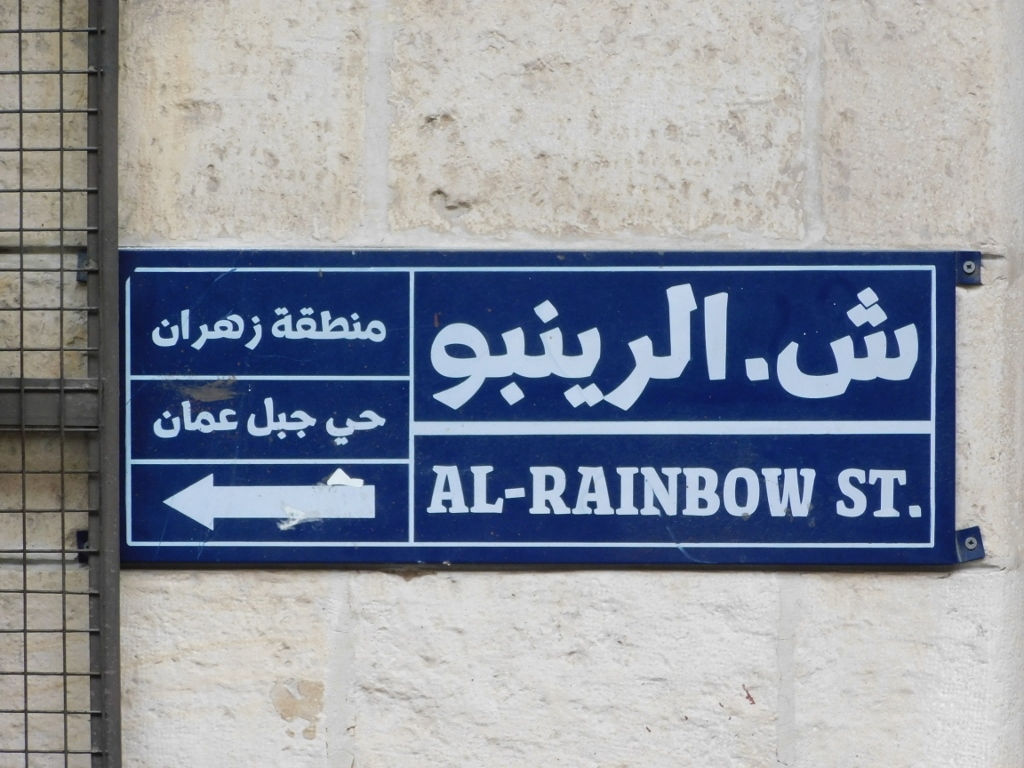 A popular street in Amman
A popular street in Amman
So, this street has a myriad of cafés and restaurants, and it is particularly popular in the evening.
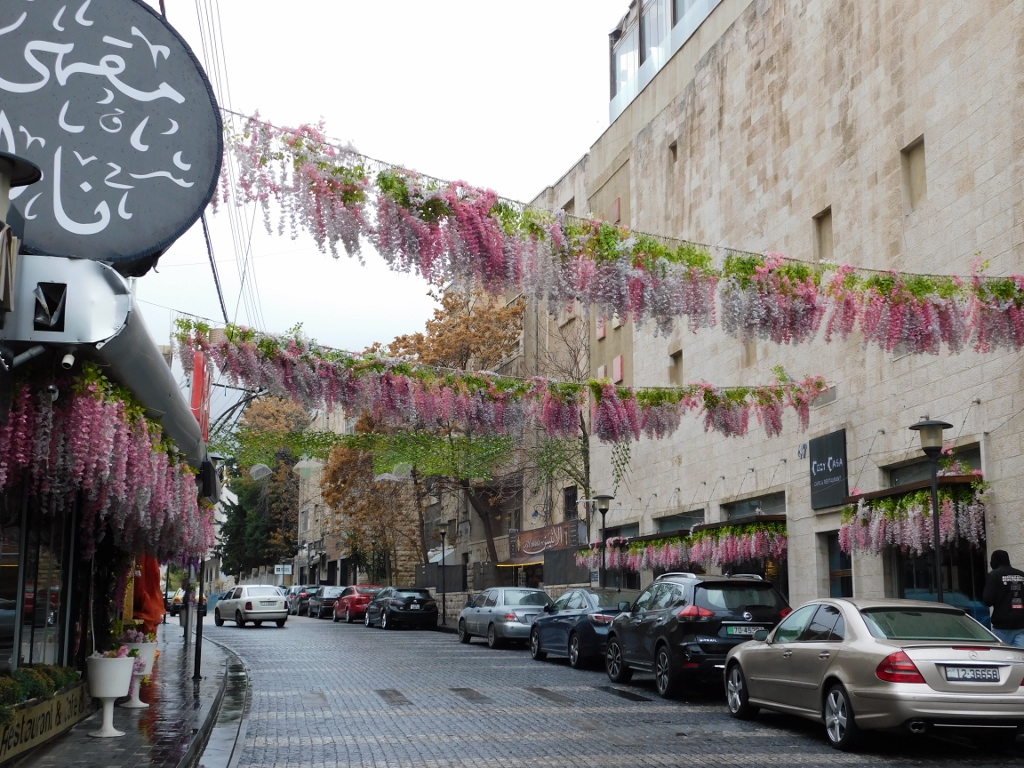 The Rainbow Street
The Rainbow Street
I went to a café and sat there, but they first asked me to show them a certificate that I was vaccinated against covid. Since in January 2022 I could not enter Jordan anyway without such a certificate, I was ready and soon I enjoyed a very good coffee. I also appreciated the break in a warm room, since the cold wind outside persisted.
When I finished with the coffee and the break, I dressed well, putting on both jackets again, a knitted cap and a hood that was a part of the wind-jacket, and now I was ready to walk down to the centre that was a mere kilometre away from here, but it felt easy being all downhill.
And so I reached the Grand Husseini Mosque.
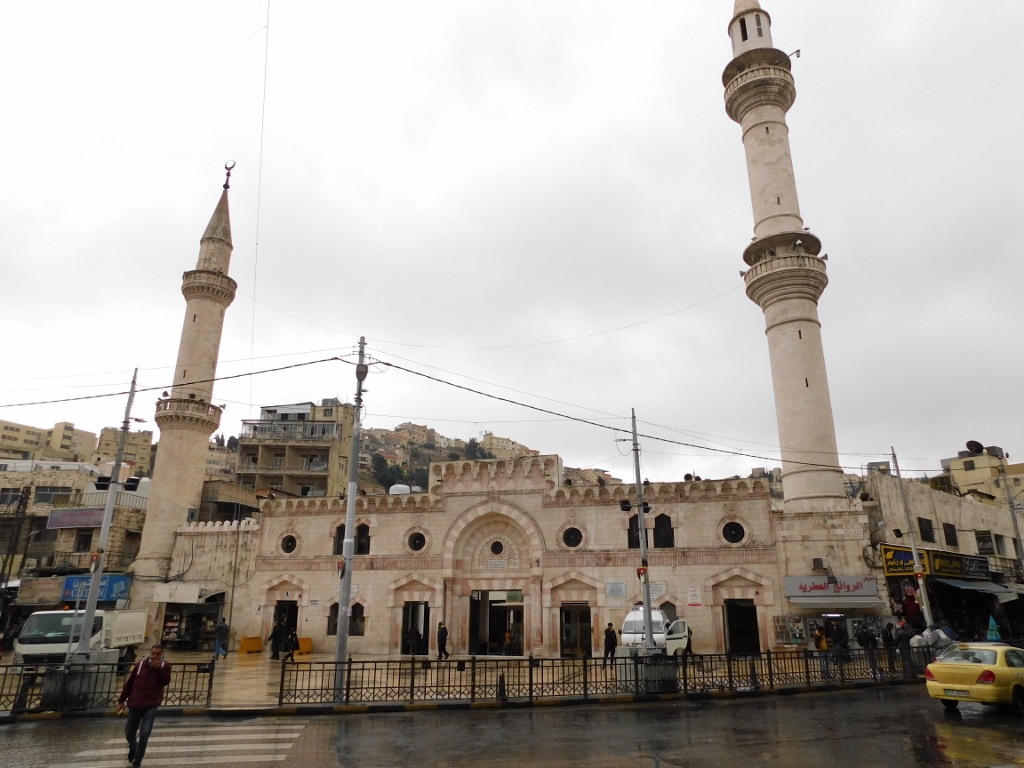 Grand Husseini Mosque
Grand Husseini Mosque
Back in the day, there used to be a Byzantine church in this spot, but already in 640 the first mosque was built here. The mosque that can be seen here today has no physical link with the original, since it was constructed in 1932, but because of the spiritual longevity, this mosque is considered as the oldest in Amman.
By the way, let me mention that the number of residents in Amman has significantly gone up during the last hundred years or so. It is estimated that at the beginning of the 20th century Amman had around 2000 inhabitants. Today, it has the population of over 4 million. This is partly the result of migrations, as well as large families that are very traditional in Jordan.
But, let me go back to the Grand Husseini Mosque. It was Friday, but the main, noon prayer was over and I thought I would not bother anybody with my visit. I already had a wide shawl in my backpack in order to cover my head so that my hair did not protrude and then I went in. I saw where the entrance for the women was and I headed there first. A very kind woman, who addressed me with “sister,” directed me, after I had taken my shoes off, upstairs, for this was the place where the women prayed.
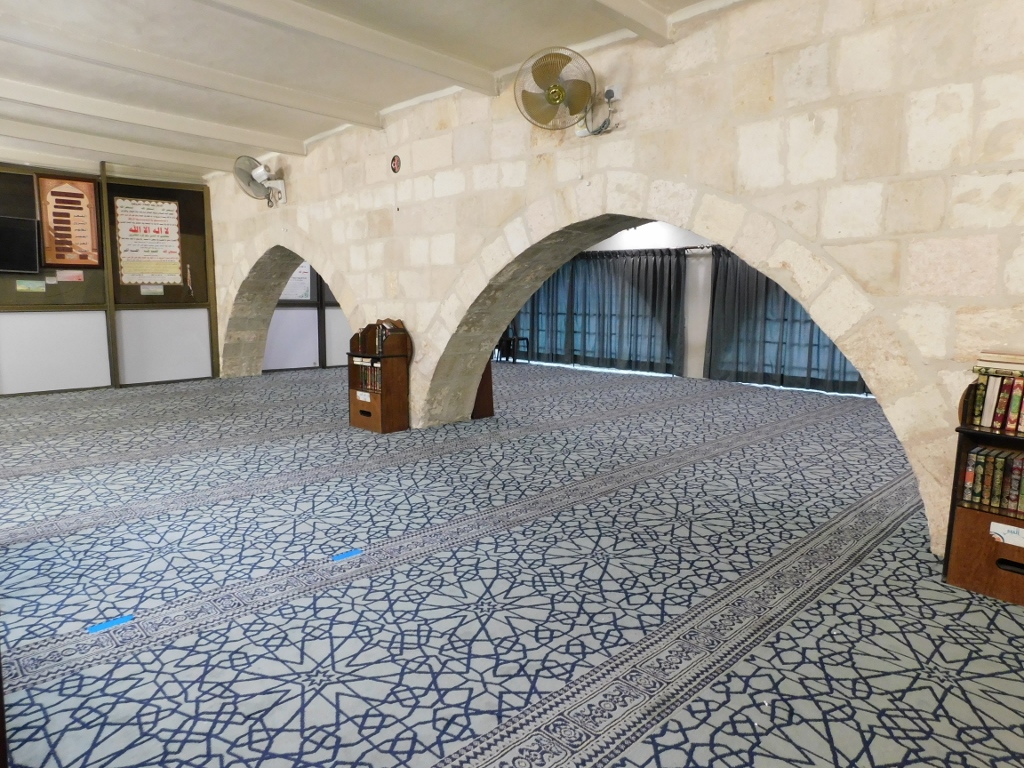 Grand Husseini Mosque, section for women
Grand Husseini Mosque, section for women
I did not stay there for too long, so I got down, and this kind woman gave me a packaged portion of water which they obviously distributed to the visitors. I thanked her and headed for the central courtyard with a shadirvan looking where I could enter the praying hall.
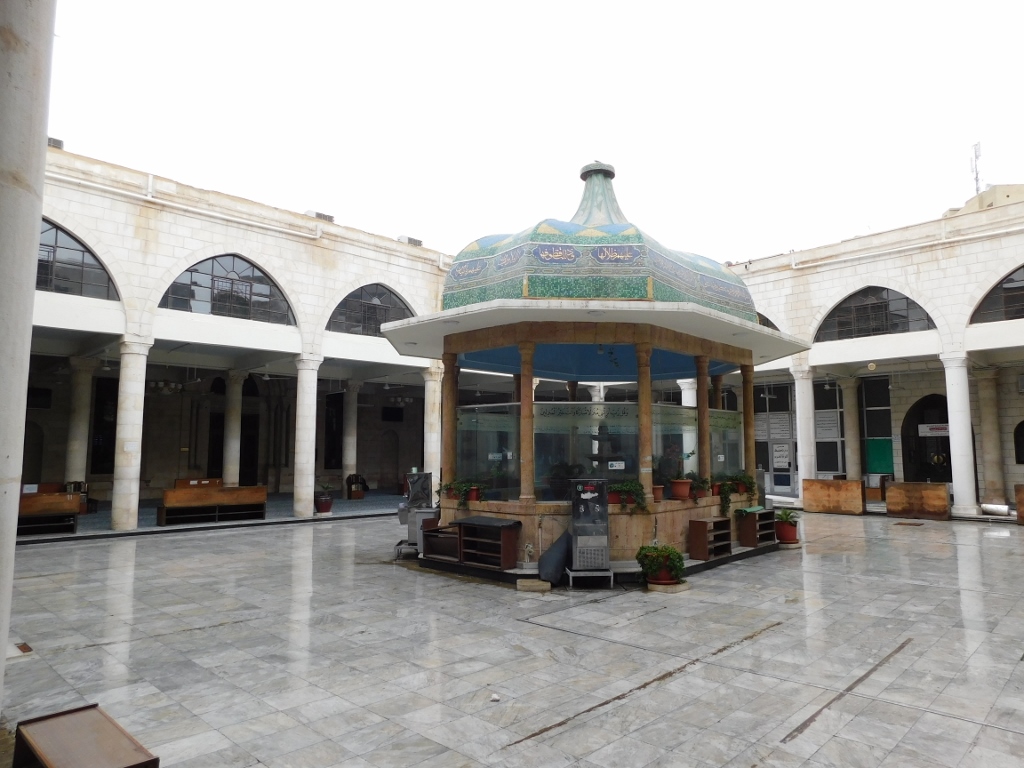 Grand Husseini Mosque, central section with the shadirvan
Grand Husseini Mosque, central section with the shadirvan
Still, first I decided to take photos of the courtyard, but I actually stepped into a pool of rainwater and as I did not wear any shoes, my thick socks got completely soaked. That was the end of any sightseeing here. I had to put my sneakers over my wet socks, but at least the hotel was just a few hundred metres away, so I could get there and change, putting on dry stocks, as well as getting dry sneakers. Luckily I had the back-up.
After this break, I could finally go to the Roman Theatre. The theatre used to be in the centre of Roman Philadelphia. When you approach the theatre directly from the main street in the old part of the city, you first come across a colonnade of Corinthian pillars and some paved sections. These are all remains of the ancient Roman forum.
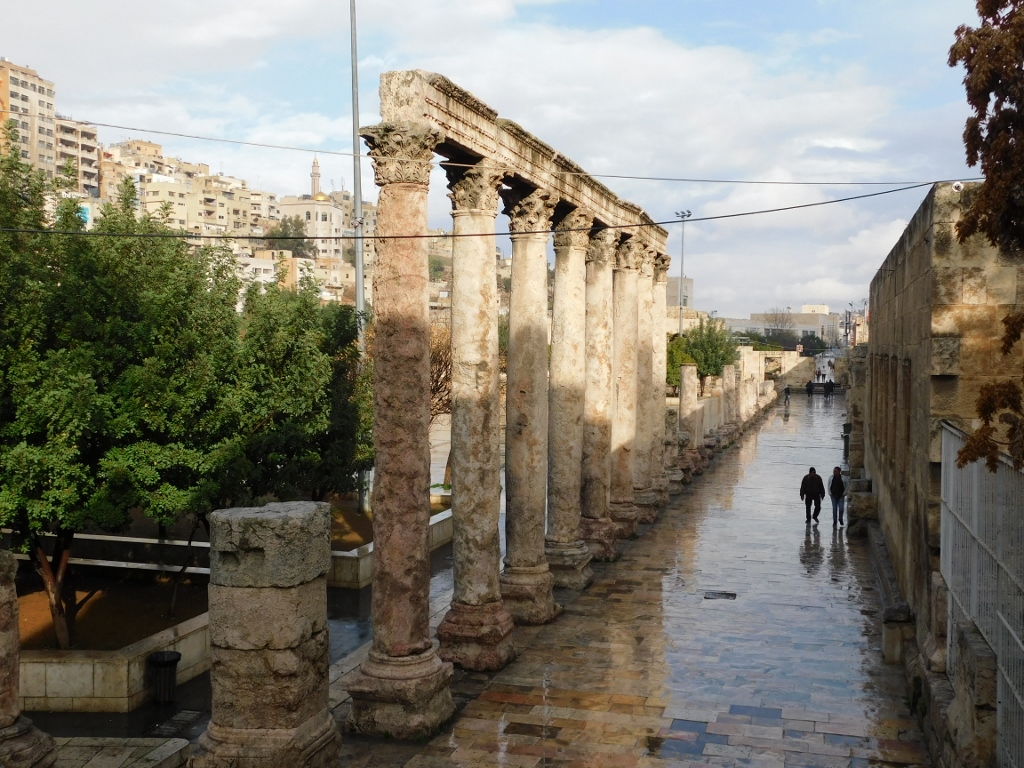 Remains of the forum in (Roman) Philadelphia
Remains of the forum in (Roman) Philadelphia
The theatre was constructed in the period from 138 CE to 161 CE by being built into the slope of a hill. It can receive around 6000 visitors. Still, in order to enter the theatre, I first had to go to a ticket office that is located next to the street separated from the theatre by a large plateau.
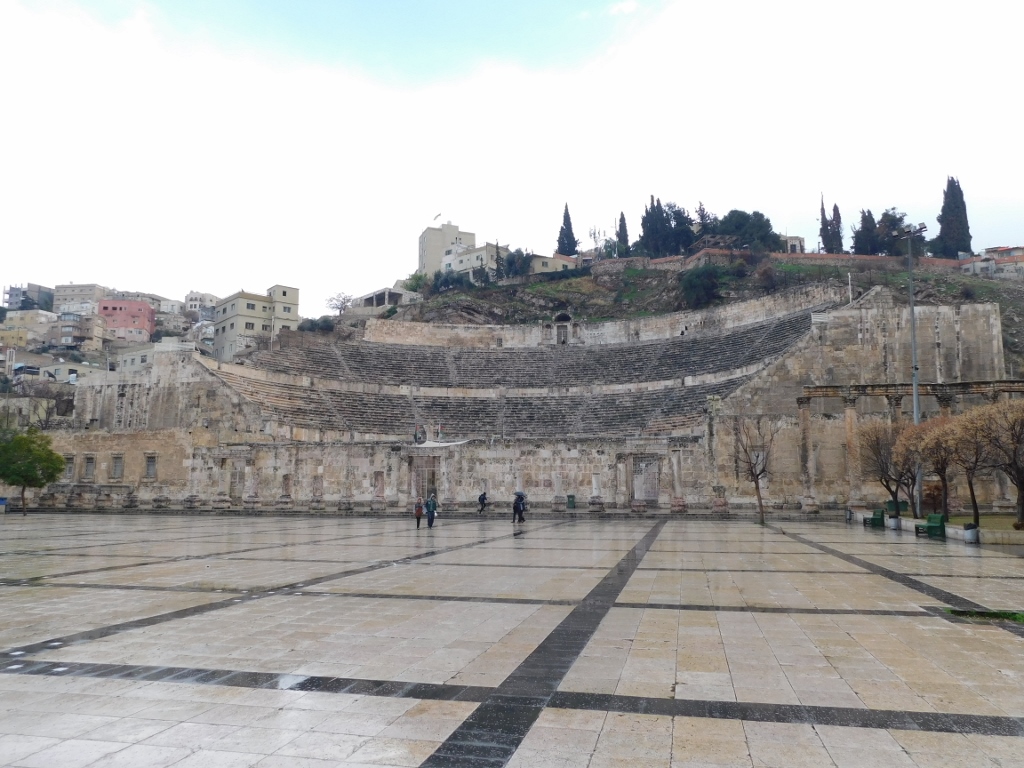 Roman Theatre in Amman
Roman Theatre in Amman
The theatre was positioned in such a way that the stage was on the north side, meaning that it was lit by the Sun throughout the day, while the seats were on the south side and consequently in the shade, which certainly made it easier for the audience to enjoy the theatre plays during the hot days in Philadelphia. This was, certainly, not the case in January.
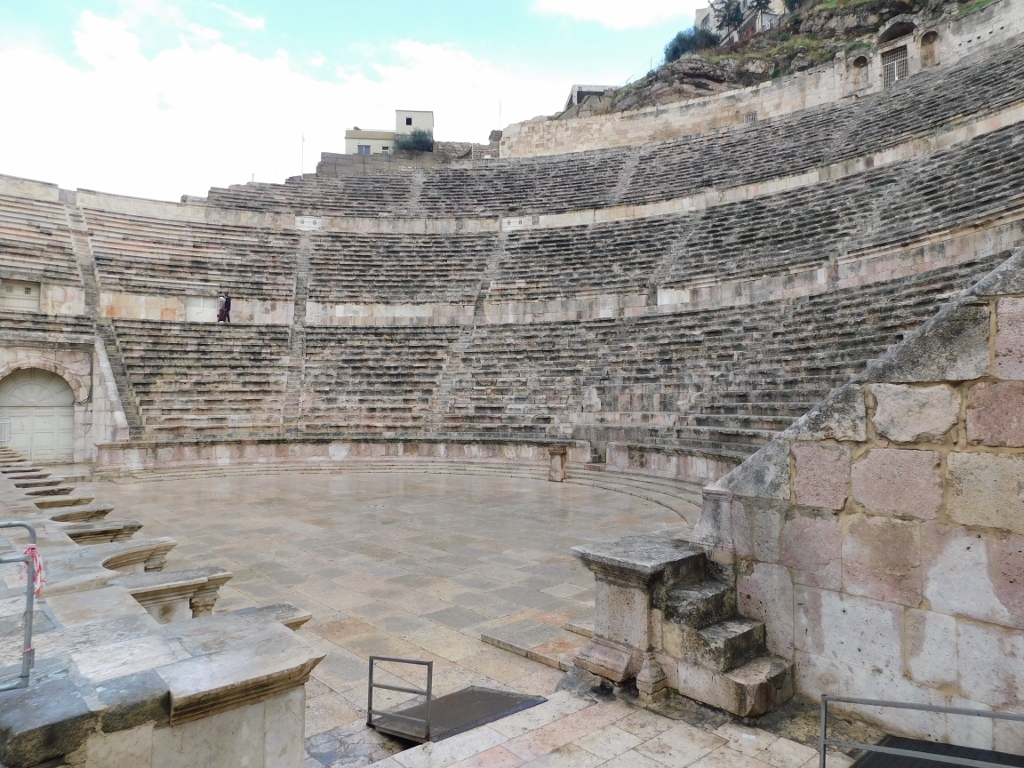 Roman Theatre in Amman
Roman Theatre in Amman
Since the rain had stopped, I could play a little with my camera and so I made an “advanced selfie.”
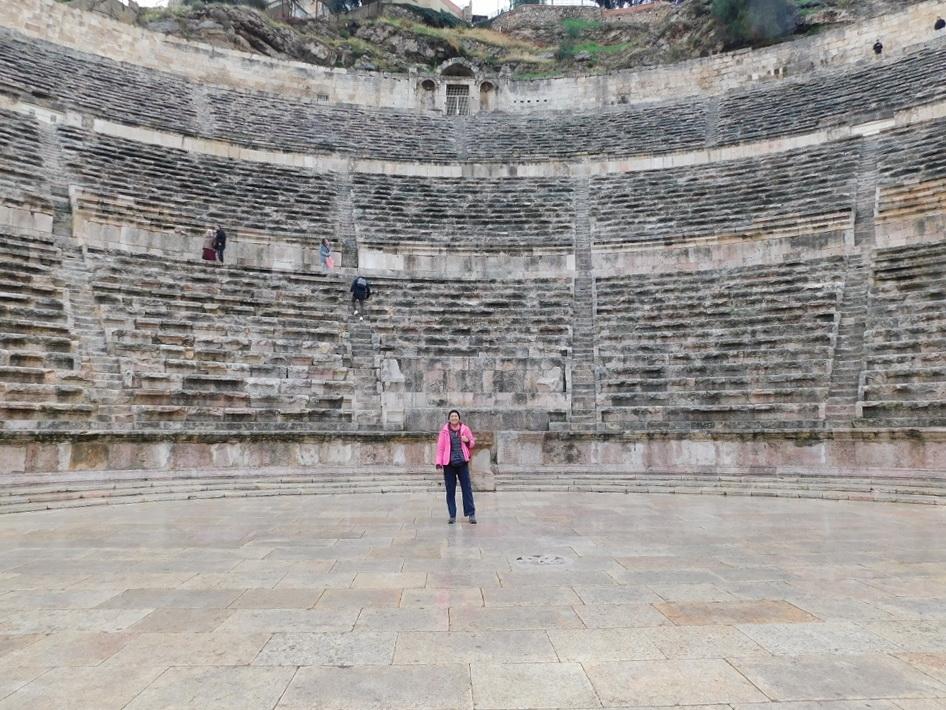 In the Roman Theatre in Amman
In the Roman Theatre in Amman
Needless to say, I had to climb here as well and for that I used the steps that led beside the loge for special visitors to the theatre.
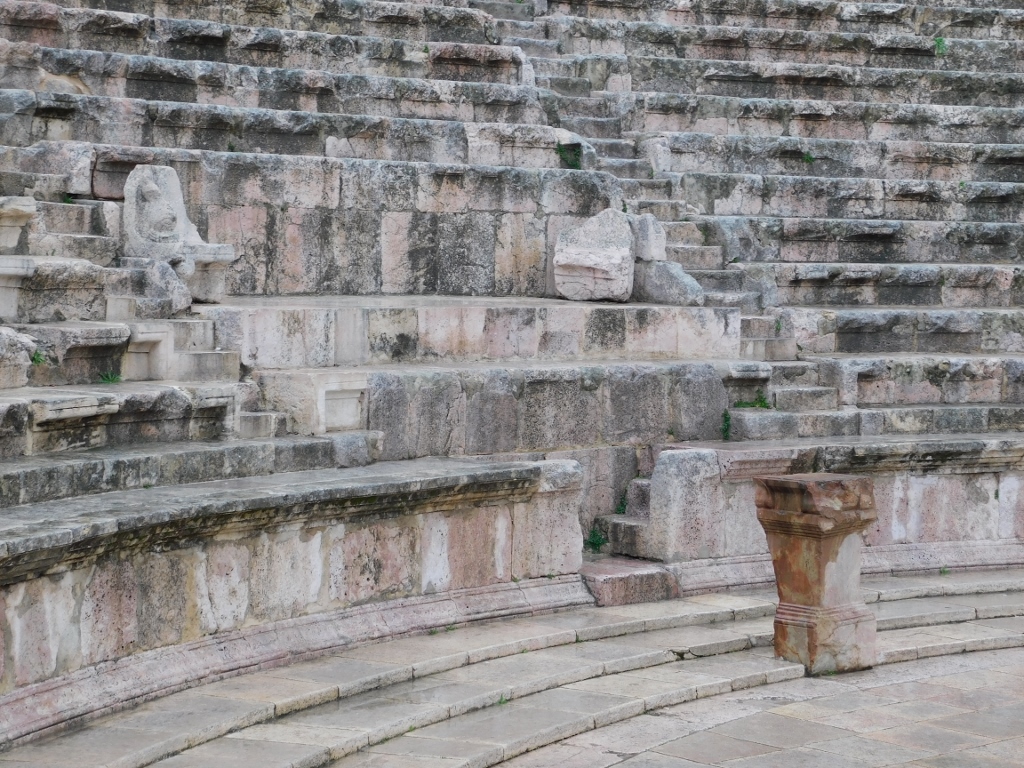 Loge in the central part of the Roman Theatre in Amman
Loge in the central part of the Roman Theatre in Amman
The theatre auditorium is divided into three horizontal sections with wide passages. I found it interesting to see in these wider passages decorative openings positioned right below the narrow stairs leading upwards. I can only presume that these openings were there in order to drain the rainwater pouring down the stairs.
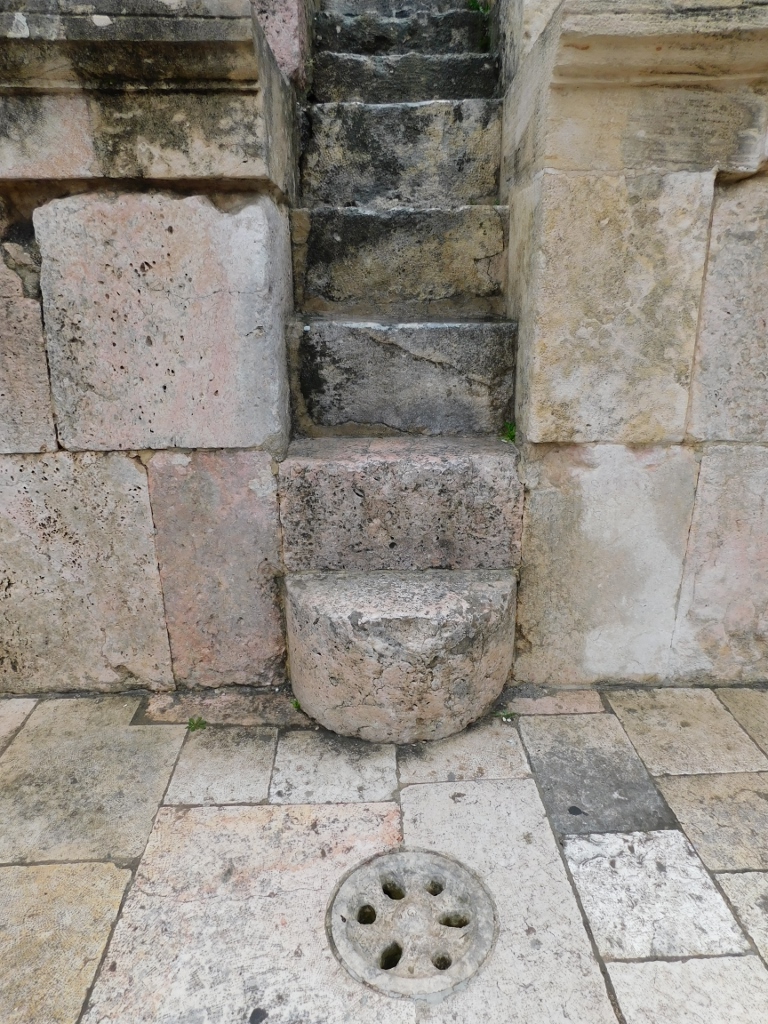 Roman Theatre in Amman, a detail
Roman Theatre in Amman, a detail
Although I had promised to myself that I would climb no more on this day, I had to give up such intention. It was worth it.
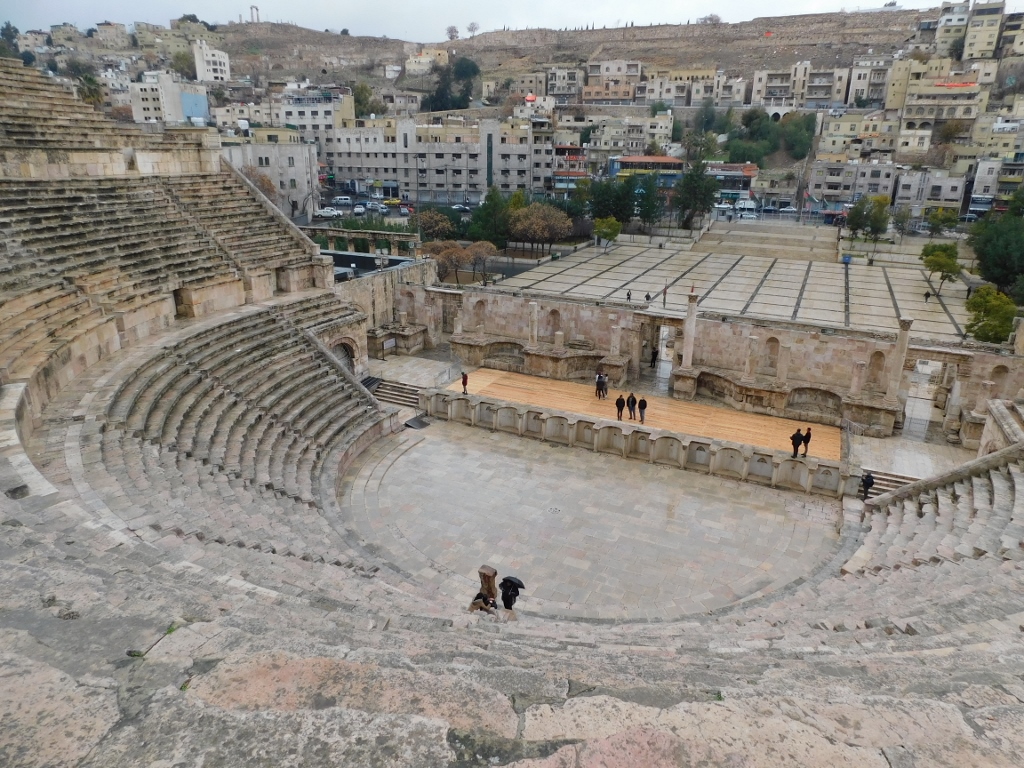 Roman Theatre in Amman
Roman Theatre in Amman
Walking along one of those wider passages I got to the end of the auditorium and descended down a side stairway, having at one moment a beautiful view at Jabal Al Qala’a where I could see the remains of the Temple of Hercules.
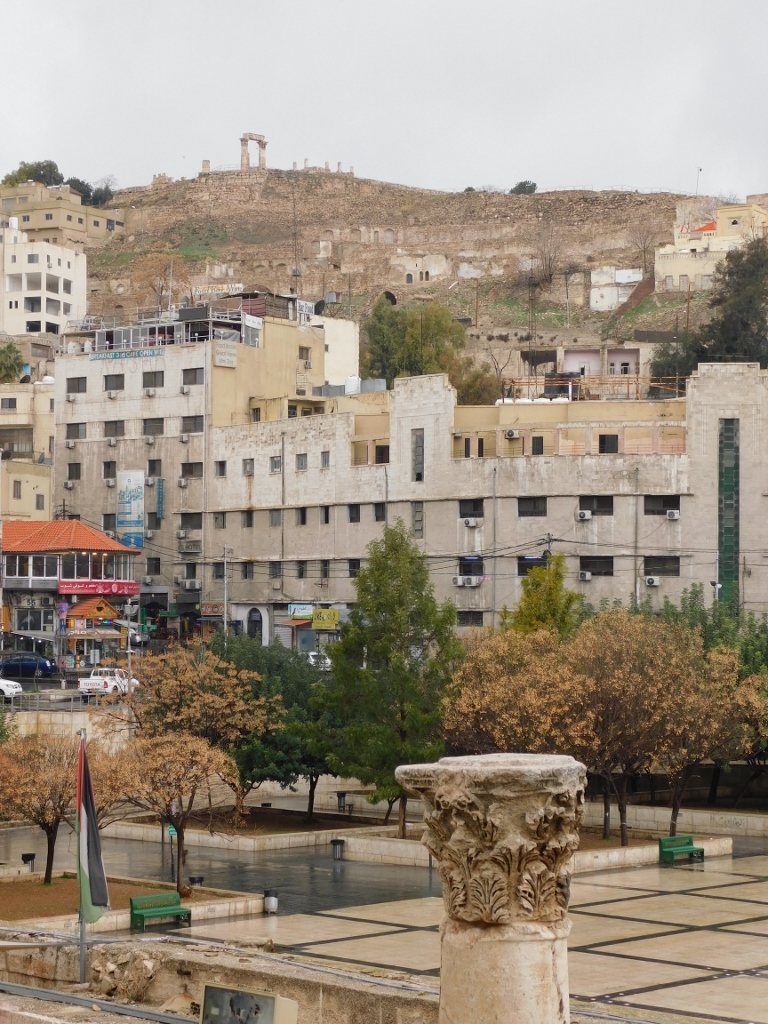 Parts of Amman
Parts of Amman
Within the Roman Theatre, on the premises to the side of the stage, there are two small museums nowadays: the Folklore Museum and the Jordan Museum of Popular Traditions. Both of the museums are interesting and the exhibit displays of different traditional crafts, living quarters, traditional costumes, jewellery, etc.
As I would realise during my second stay in Amman, at the end of my journey, there is another Roman theatre here, the Odeon, but I skipped it this time. Namely, it was high time for me to go and grab something to eat, so I bought a shawarma which I ate later on in my hotel room. But, before that I gave myself a treat by drinking on the spot a freshly squeezed pomegranate juice. Highly recommended!
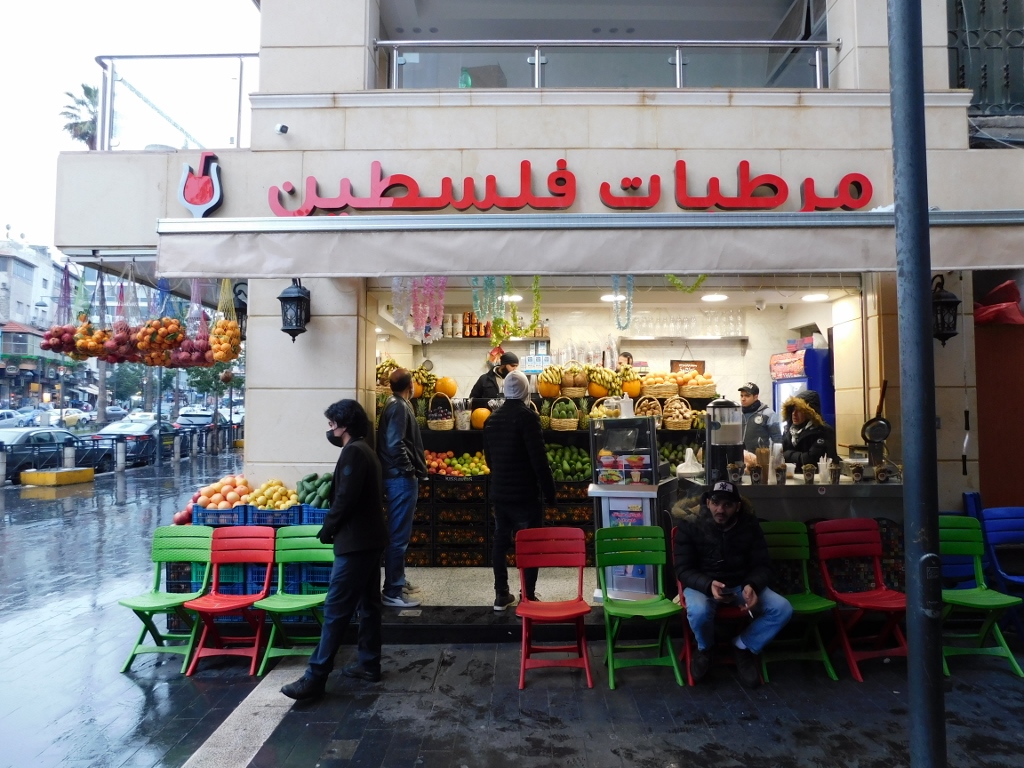 One of the numerous places in Amman where you can buy freshly squeezed juices
One of the numerous places in Amman where you can buy freshly squeezed juices
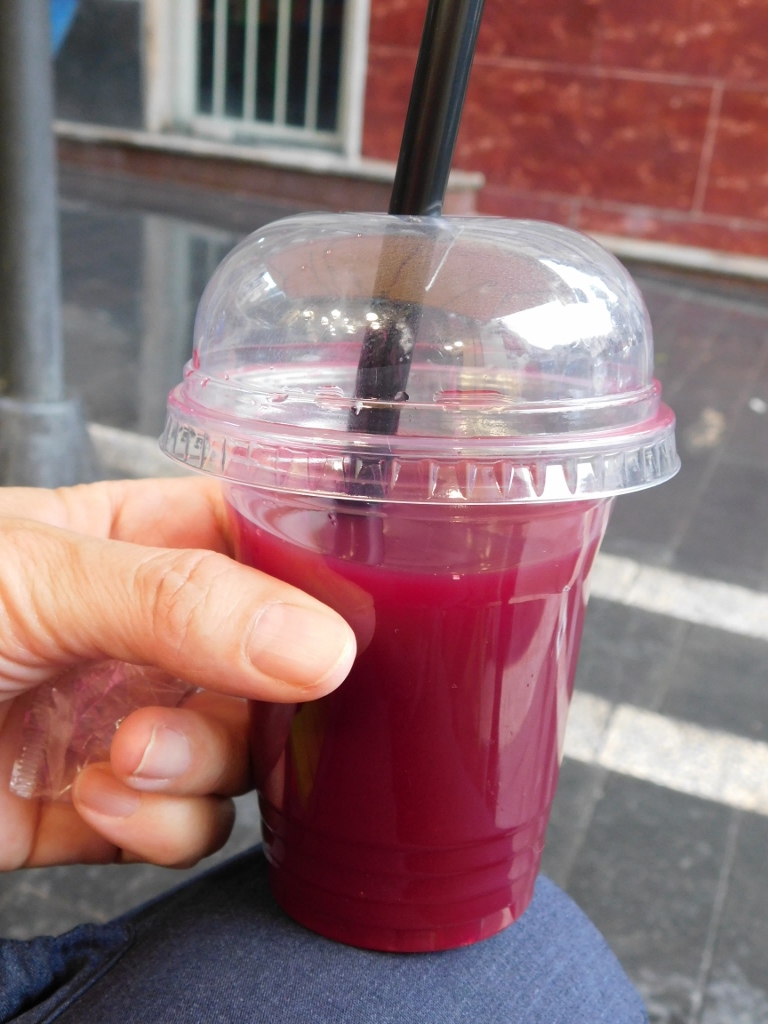 Freshly squeezed pomegranate juice
Freshly squeezed pomegranate juice
Although it was still day, I withdrew to my room, first in order to eat the shawarma and second because I knew that a very important museum not far from my hotel was closed (it was Friday – a non-working day). A little later I went for a short walk around the neighbourhood and that felt good. The next morning I had to get up early in order to go for yet another car-excursion outside Amman.